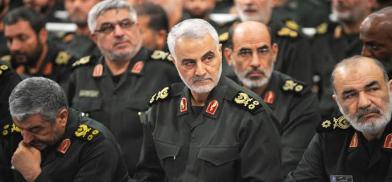Soleimani’s killing has only helped Islamic State, will threaten South Asian security
The re-emergence of IS would have a definite impact on the Af-Pak region, with its consequential fallout for India and regional peace and stability in South Asia, writes Brig Anil Gupta (retd) for South Asia Monitor

In December 2017 the world celebrated the defeat of Islamic State (IS), the deadly face of terror that compelled world powers, with differing strategic interests, to come together to defeat it and the idea of a medieval Caliphate which IS had succeeded in creating by capturing swathes of territory in Iraq and Syria,, including oilfields, refineries and minefields of strategic minerals. The aura of IS was such that it attracted thousands of jihadists from different parts of the world.
The menace of IS grew so fast that the entire world was unanimous in countering the threat it posed. Iranian General Qasem Soleimani was the face of armed resistance against IS in Iraq and Syria, along with USA, Russia, Turkey and European allies. He contributed in a significant way to defeat ISIS. The US and Iran, adversaries in the Middle East, identified a common enemy in IS and effectively fought together against IS to eliminate the terror group’s de facto state in Iraq and Syria. But realpolitik overtook the strategic convergence of interests and Iran and the US are near a conflict again in the region, after US President Donald Trump authorised the killing of Soleimani, who headed Iran’s Revolutionary Guard’s elite Quds Force while he was visiting Iraq.
This raised US–Iran tensions to a new level and let lose many Shia militias that Soleimani had carefully raised and groomed to counter and challenge IS. Their focus has suddenly shifted from combatting IS to targeting US assets and troops in West Asia. Under threat of Iranian retaliation, even the US focus has been diverted from IS and other radical Islamist jihadi terror groups. If there has been a clear winner of the ongoing US-Iran conflict, it is undoubtedly IS, which has been provided with much-needed oxygen and time and space to reorganise and regroup. The US and its allies now face the dual threat of Shia militias and Sunni radical Islamist jihadi terror groups led by IS. Soleimani’s killing has prompted growing demands for US forces to leave Iraq, further complicating the security scenario in the region and, in the process, hurt efforts to eradicate IS.
In December 2017, ISIS may have been defeated but it was not destroyed, it may have been disseminated but was not dissolved. The upheaval created by Soleimani’s killing has given rise to conditions in the region that IS can exploit. The weakening of Shia militias in the absence of Soleimani’s charisma and leadership has definitely weakened the Iraqi government, creating a space for IS and other Sunni terror groups to stage a comeback. IS fighters who had dispersed and gone underground are now rebuilding and re-emerging as a potent regional threat.
Though Washington denies any surge in IS activity, the fact is that with a divided focus, it has become increasingly difficult for the US to contain IS, which may attempt to regain lost territories in Syria and Iraq depending on the resistance it faces. IS is also restoring and rejuvenating its social media wing, an important source of funding and recruitment. IS propaganda sites are on the rise in various social media platforms and apps.
The re-emergence of IS would have a definite impact on the Af-Pak region, with its consequential fallout for India and regional peace and stability in South Asia. Soleimani’s successor, Brigadier General Ismail Qaani, is an old hand at fomenting trouble in Afghanistan and Pakistan. Soleimani himself had played an active role in Afghanistan by cooperating with the Northern Alliance to fight the growing spread of the Taliban. Later, after the American invasion of Afghanistan, Iran courted the Taliban to fight the American and other Western troops in Afghanistan. Qaani who, till 2018, was Iran’s deputy Ambassador to Afghanistan, has been instrumental in managing Iran’s recent Afghan policy.
Pakistan has also been accused of fomenting cross-border terror in the Sistan-Balochistan region by Iran, which is opposed to the rise of any Sunni-fundamentalist regime on its eastern border. With Pakistan now assisting US efforts to forge a deal with the Taliban, Iran is furious. Shia-Sunni violence in Pakistan and persecution of Shias remains a constant point of friction between Iran and Pakistan. Thus, a US-Iran conflict in West Asia may have a tangible impact on the situation in Afghanistan, with Iran turning a blind eye to the rise of IS in the Af-Pak region as an additional threat to the US troops. In the process, Iran will try its best to derail the Afghan peace process. While Iran may have its own axe to grind in Afghanistan and deal with Pakistan for promoting American interests in the region, the rise of IS will have a definite, adverse impact on India’s security.
IS may well use Pakistan, and even Bangladesh, as launch pads to renew its threat of Ghazwa-e-Hind. India will have to be cautious and watchful and, at the same time, strengthen its intelligence apparatus to counter the emerging challenges.
(The author is a Jammu-based Indian Army veteran, security and strategic analyst)









Post a Comment